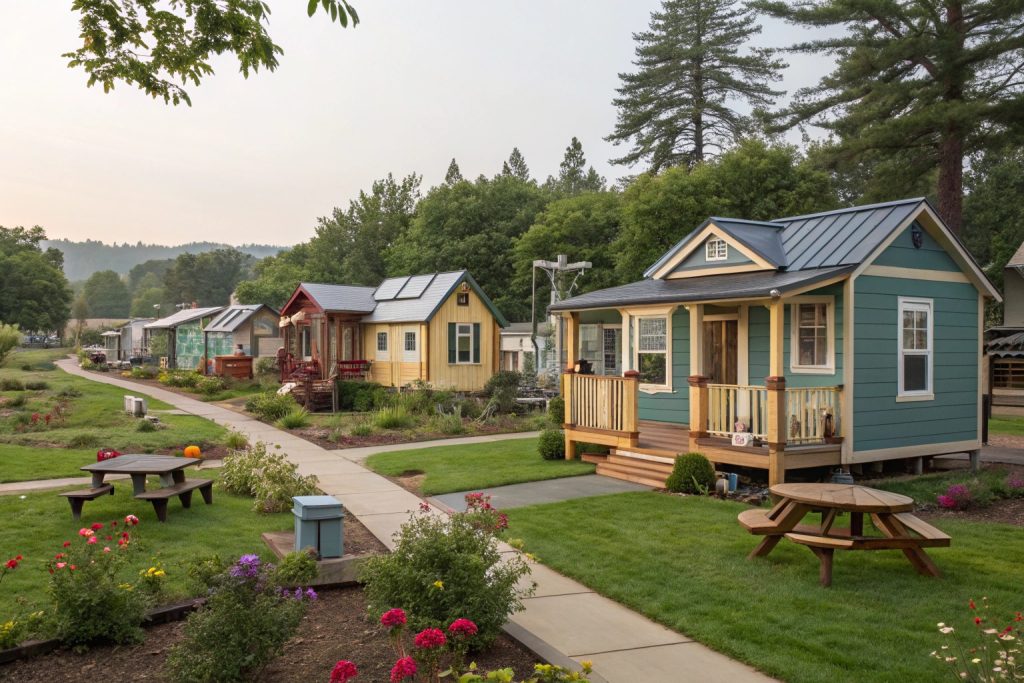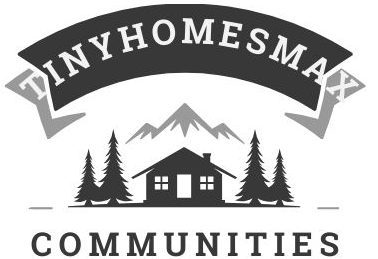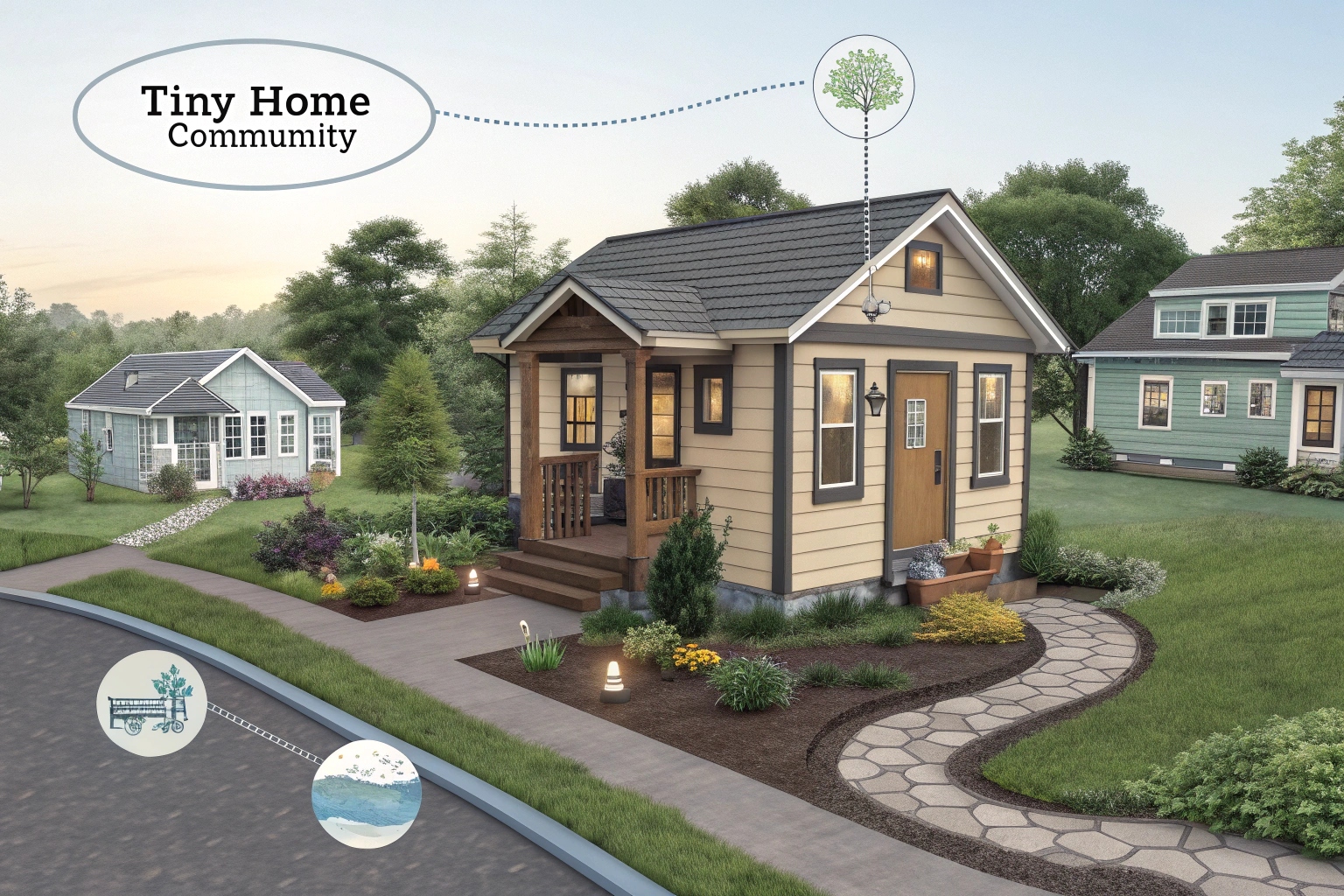“Starting a tiny home community is a great way to bring people together who share an interest in simple, affordable, and green living. Whether you want to support eco-friendly housing or offer affordable places to live, building a tiny home community can be a rewarding project. This guide will show you the steps to start your own tiny home community successfully.”

1. Define Your Vision and Purpose
The first step in starting a tiny home community is to have a clear vision of what you want to achieve. Ask yourself the following questions:
- What is the main purpose of the community? (e.g., sustainable living, affordable housing, eco-tourism)
- Who is your target demographic? (e.g., retirees, young professionals, eco-conscious individuals)
- Will your community be off-grid, partially self-sustained, or fully integrated into local infrastructure?
Having a strong vision will guide your decisions throughout the planning and building process.
2. Research Zoning Laws and Building Codes
“Before you begin, it’s crucial to research local zoning laws and building codes, as these can significantly impact your tiny home plans. In fact, tiny homes often fall into a gray area when it comes to regulations, and moreover, different municipalities have varying restrictions on their use. To get started, some steps to take include the following:”
- Contacting local planning offices to understand what types of homes are allowed in specific zones.
- Investigating building codes, as tiny homes might not meet certain residential standards.
- Checking if land can be used for group residential projects or if you need special permits for a tiny home village.
Look for areas that have more flexible regulations around alternative housing or places that are actively encouraging tiny home communities.
3. Secure Land for the Community
The next step is finding a suitable piece of land for your tiny home community. Here are key factors to consider when choosing a location:
- Accessibility: Make sure the land is close to necessary amenities like grocery stores, hospitals, and public transportation.
- Size: Ensure there is enough space to accommodate several tiny homes along with shared facilities like a communal garden or common areas.
- Utilities: Depending on your vision, you may need land with access to water, electricity, and sewage lines. Alternatively, you can go off-grid with solar panels, rainwater harvesting, and composting toilets.
4. Plan the Layout of the Community
Once you have land, create a layout for your tiny home community. Consider the following elements:
- Individual Home Placement: Decide how far apart the homes will be. Ensure each home has enough privacy and outdoor space.
- Shared Spaces: Plan for communal areas such as gardens, kitchens, recreational areas, and community centers where residents can gather.
- Roads and Paths: Design roads or walkways to allow easy movement around the community, keeping in mind vehicle access and pedestrian paths.
A well-planned layout will foster a sense of community while ensuring residents have their own personal space.
5. Establish Financial Structure
Building a tiny home community requires financial planning. You’ll need to determine how the costs will be managed and what financial model the community will follow:
- Cooperative Model: In this model, residents collectively own the land and share expenses. Monthly fees can cover maintenance, utilities, and communal amenities.
- Rental Model: If you own the land, you can rent out spaces to tiny homeowners. This model can create a steady income stream for the community developer.
- Land Lease: Residents own their tiny homes but lease the land from the community.
Be sure to create a budget that accounts for land purchase, infrastructure, legal fees, and ongoing maintenance.
6. Create Community Guidelines and Governance
For your tiny home community to thrive, it’s essential to establish clear rules and governance from the start. These guidelines should outline:
- Expectations for communal living: How will chores, maintenance, and responsibilities be divided among residents?
- Noise and privacy policies: What are the quiet hours? How much privacy should each household expect?
- Dispute resolution: How will conflicts between residents be handled?
Consider creating a community council or cooperative board to oversee decision-making and ensure that everyone has a voice in how the community is managed.
7. Attract Residents
Once your tiny home community is ready, it’s time to attract like-minded individuals to join. Here are some ways to market your community:
- Website and Social Media: Build a website and promote your community on social platforms to reach potential residents.
- Host Open Houses: Invite people to tour the community, meet current residents, and get a feel for the lifestyle.
- Local Outreach: Work with local organizations, eco-conscious groups, or housing advocates to spread the word.
8. Foster a Sense of Community
Building physical structures is only part of the equation; creating a strong sense of community is equally important. Encourage residents to participate in community events, volunteer for communal tasks, and share resources. Host regular meetings to address any concerns or improvements, and focus on building a culture of mutual respect and cooperation.
Conclusion
Starting a tiny home community is a complex but rewarding process. By clearly defining your vision, understanding local laws, securing land, and fostering a sense of community, you can create a thriving environment that promotes sustainable living and affordable housing. With careful planning and dedication, your tiny home community can become a reality that benefits both residents and the broader society.
The Tiny Life – How to Start a Tiny House Community
This guide covers the key steps in starting your own tiny house community, from planning and zoning to financing and development.Tiny House Society – Building a Tiny House Community
Offers insights into the legal and logistical aspects of building and running a successful tiny house community.Living Big in a Tiny House – Tiny House Communities Around the World
Provides inspiration from established tiny house communities around the world, offering real-life examples of sustainable, communal living.
FAQ
Research Online: Websites like Tiny House Community and Tiny Living provide directories of communities.
Social Media Groups: Join Facebook groups or Reddit threads dedicated to tiny living.
Local Zoning Laws: Check local regulations to identify areas that allow tiny homes.
Attend Events: Tiny house festivals and expos are excellent places to network and learn about communities.
Fresno: Known for its tiny home-friendly zoning policies.
San Luis Obispo: Offers designated tiny house lots.
Sonoma County: Allows tiny homes as accessory dwelling units (ADUs).
Before settling, confirm zoning laws and whether tiny homes are permitted as permanent or temporary residences.
Yes, North Carolina has several tiny home communities, including:
The Village at Flat Rock: A resort-style tiny home community near Asheville.
Riverview Cove: Located in the mountains, offering scenic views and tiny home living.
Acony Bell Tiny Home Village: Features long-term leases and community events.
In Missouri, you can live in tiny home-friendly areas such as:
Lake Ozark RV Park: Offers lots for tiny homes with scenic lake views.
Columbia: Some neighborhoods permit tiny homes as accessory dwellings.
Kansas City: Certain districts have begun adopting tiny home-friendly zoning regulations.

